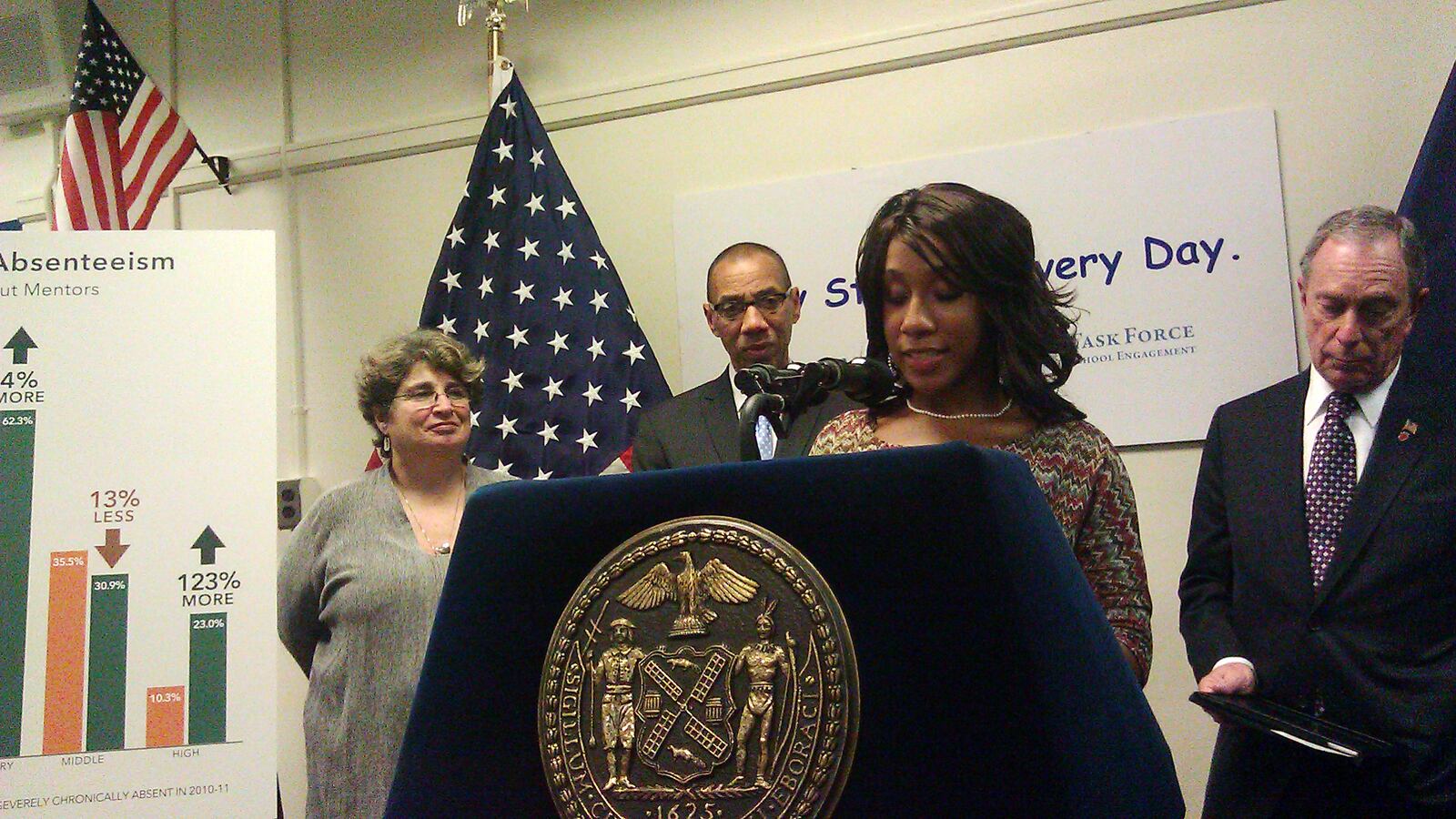After testing a range of strategies to combat truancy, the city is settling on one that’s close to home: matching students with a mentor within their own schools.
“Mentoring has been central to our fight against chronic absenteeism,” Mayor Michael Bloomberg said during his weekly radio address on Sunday, which focused on the start of the school year.
Since 2010, when Bloomberg launched a campaign against absenteeism, the city has paired some frequently absent students with “Success Mentors,” school staff and volunteers who monitor their attendance and coax them back to school. After starting with just 450 students in 2010, the program grew to about 4,000 students in 50 schools last year.
Citing dramatic gains, the city has increased the program’s size again this year. With more than 5,000 students in 100 schools, the Success Mentor initiative is now the largest school-based mentoring program in the country, city officials say.
John Feinblatt, the deputy mayor in charge of the Interagency Task Force on Truancy, Chronic Absenteeism and School Engagement, said last year that the city was exploring a range of “success mentor” models, including peer mentoring and enlisting volunteers from outside organizations. But the city has zeroed in on what it’s calling the “internal school-staff model” in part because it can be expanded without adding cost or personnel, according to Lauren Passalacqua, a city spokeswoman.
Under the model, school staff members — teachers, administrators, and support staff, including counselors and social workers — are matched with individual students who are chronically absent or seen as likely to have major attendance issues in the future.
In addition to communicating with the students they are mentoring, the staff members collect data about the students’ attendance, performance, and other variables. Each week, principals meet with the mentors to review the data and strategize for the future. Mentors also spend 20 percent of their time on strategies for helping their entire schools improve.
It’s a systematized, data-driven version of something teachers have always done: look out for their students and work with colleagues to help the students who fall behind. It also closely mirrors some components of a data program designed by Johns Hopkins University researcher Robert Balfanz. In the Balfanz model, which some city schools are using, schools analyze data not just about attendance but also about behavior and math and reading grades.
An analysis of states’ approaches to collecting and using attendance data that Balfanz and a colleague published in May lauded the Success Mentor initiative.
“The expectations are high for Success Mentors,” the report lauded in a section that said New York City had “clearly moved absenteeism prevention to the head of the class” with its attendance task force.
Students who had mentors last year saw their absenteeism rates fall by 25.3 percent for elementary school students, 16.4 percent for middle school students, and 2.8 percent for high school students, according to city data.
Altogether, students with mentors attended almost 12,000 more days of school than chronically absent students at schools the city identified as similar, according to the city. Students who miss more than a month of school are considered chronically absent, and they are less likely to graduate or hit other markers of success.
Passalacqua said the city crunched the attendance data to see what characteristics made a mentor-student relationship more likely to be correlated with improved attendance. Were younger mentors more effective than older ones? Were students who worked with school personnel than students who worked with external volunteers? The most significant variable the department examined, she said, was whether students and mentors worked together from the beginning of the school year.
So this year, the city added 50 new schools to the program roster and is matching new students with mentors early in the year. The new additions include 13 elementary schools, 10 middle schools, 16 high schools, and — in the most significant increase — 11 transfer schools for students who have fallen behind. Last year, only two transfer schools offered Success Mentors to their chronically absent students.
The new schools were selected because they had above-average rates of chronic absenteeism and a principal who wanted to tackle the issue, Passalacqua said.
Last year, Jean Robinson, then a high school senior, said her mentor was instrumental in getting her to halve the number of school days she missed. Before starting to work with her mentor, a school guidance counselor, no one had ever bothered to tell Robinson she had to go to school, she said.
“I just feel like I needed that extra push, somebody to get me out the door and say, ‘Hey, you’re going to school,’” Robinson said.


